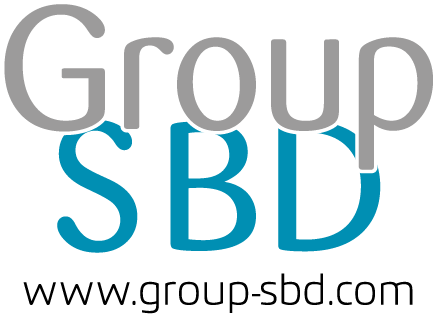Effectiveness of physiotherapy after mandibular fracture surgery
Efectividad de la fisioterapia en fracturas mandibulares intervenidas quir├║rgicamente
Authors: Cristina Molas-Ferrer
Keywords: Physiotherapy. Mandibular fracture. Temporomandibular dysfunction. Rehabilitation
Keywords: Fisioterapia. Fractura mandibular. Disfunci├│n temporomandibular. Rehabilitaci├│n
Abstract: Open reduction with internal fixation (ORIF) is the election choice to repair mandibular fractures (FM). Between 16-29% of these patients will develop temporomandibular joint dysfunction (TMJD) with functional alterations that directly impact on quality of life (QoL). Although there is no specific clinical guideline for the rehabilitation of these patients, a physiotherapy intervention could be considered according to the clinical dysfunctions.
Abstract : La cirug├şa de reducci├│n abierta con fijaci├│n interna (ORIF) es de elecci├│n para la reparaci├│n de las fracturas mandibulares (FM). Pero el 16-29% de los pacientes intervenidos desarrollar├í una disfunci├│n temporomandibular (DTM) con alteraciones funcionales que impactaran en su calidad de vida (CdV). Aunque no hay ninguna gu├şa cl├şnica espec├şfica para la rehabilitaci├│n de estos pacientes se podr├şa plantear una intervenci├│n fisioter├ípica atendiendo a la cl├şnica de las secuelas.
01-06-2022
Cristina Molas-Ferrer
0 Comments
| Citation: Cristina Molas-Ferrer. Efectividad de la fisioterapia en fracturas mandibulares intervenidas quir├║rgicamente. https://doi.org/10.24175/sbd.2022.000039 |
| Received: June 01, 2022 Accepted: June 07, 2022 Published: June 07, 2022 |
| Copyright: © 2022 Cristina Molas-Ferrer. This is an open access article distributed under the terms of the Creative Commons Attribution License (CC BY-NC), which allows, distribution, reproduction in any medium, provided the original author and source are credited and non-commercial use. |
| Funding: I certify that no funding has been received for the conduct of this study and/or preparation of this manuscript. |
| Conflicts of Interest: I have no conflicts of interest to declare |
Efectividad de la fisioterapia en fracturas mandibulares intervenidas quirúrgicamente
Cristina Molas-Ferrer
Fisioterapeuta
Autor para correspondencia
Cristina Molas-Ferrer, crismolasfisio@gmail.com
Palabras clave: Fisioterapia, fractura mandibular, disfunción temporomandibular, rehabilitación.
Introducción
La cirugía de reducción abierta con fijación interna (ORIF) es de elección para la reparación de las fracturas mandibulares (FM). Pero el 16-29% de los pacientes intervenidos desarrollará una disfunción temporomandibular (DTM) con alteraciones funcionales que impactaran en su calidad de vida (CdV). Aunque no hay ninguna guía clínica específica para la rehabilitación de estos pacientes se podría plantear una intervención fisioterápica atendiendo a la clínica de las secuelas.
Objetivos
Evaluar la efectividad de la fisioterapia en la función mandibular de las FMs intervenidas mediante ORIF con relación a: severidad de la disfunción, rango de apertura mandibular, tipo y magnitud de las secuelas y calidad de vida relacionada con la salud oral (CdVRSO).
Material y métodos
Diseño: estudio piloto longitudinal prospectivo. Muestra: sujetos con DTM de grado moderado o severo (Fonseca) después de 2-4 meses de ORIF+FM (n=5). Intervención: 4 sesiones de fisioterapia (T1-T4), 40-50min de duración, cada 7-15 días, mediante técnicas de terapia manual intra/extra-oral y ejercicios activos. Se recogen variables sociodemográficas; se analiza clínicamente severidad de DTM (Helkimo), rango de apertura mandibular (mm), secuelas asociadas (cuestionario auto-elaborado) y CdVRSO (OHIP-sp14).
Resultados
Todos los sujetos redujeron significativamente el nivel de severidad de DTM (≥4puntos Helkimo). En T4 el 60% presentó DTM leve. El 60% obtuvo apertura normalizada (>40mm) y el 40% restante, óptima (>35mm). Hubo una reducción global de secuelas, especialmente las relacionadas con alteraciones articulares; los ítems con menor mejoría fueron los relacionados con alteraciones neurales. La CdVRSO mejoró significativamente a nivel global (OHIPsp14T1-T4=-6,4p±4,3); pero no tuvo significación para 2 de los sujetos.
Conclusiones
La fisioterapia puede contribuir a normalizar el rango de apertura mandibular, disminuir el grado de severidad de la DTM, su implicación funcional e impacto en la CdVRSO. Se necesitan más estudios para confirmar estos resultados así como para observar el efecto sobre las secuelas de origen neural.
Effectiveness of physiotherapy after mandibular fracture surgery
Cristina Molas-Ferrer
Physiotherapeutic
Corresponding author
Cristina Molas-Ferrer, crismolasfisio@gmail.com
Keywords: Physiotherapy, mandibular fracture, temporomandibular dysfunction, rehabilitation.
Introduction
Open reduction with internal fixation (ORIF) is the election choice to repair mandibular fractures (FM). Between 16-29% of these patients will develop temporomandibular joint dysfunction (TMJD) with functional alterations that directly impact on quality of life (QoL). Although there is no specific clinical guideline for the rehabilitation of these patients, a physiotherapy intervention could be considered according to the clinical dysfunctions.
Objectives
Evaluate physiotherapy effectiveness on the mandibular function of FM+ORIF patients in relation to the severity of dysfunction, range of mouth opening, type and magnitude of sequelae, and oral health-related quality of life (OHRQoL).
Material and methods
A prospective longitudinal pilot study. Sample are subjects with moderate or severe TMJD (Fonseca) after 2-4 months of FM+ORIF (n=5). The intervention consists of 4 sessions of physiotherapy (T1-T4), 40-50min duration, every 7-15 days, using intra/extra-oral manual therapy techniques and active exercises. Socio-demographic variables are collected and severity of DTM (Helkimo), mandibular opening range (mm), associated sequelae (self-elaborated questionnaire), and OHRQoL (OHIP-sp14) were clinically analysed.
Results
All subjects significantly reduced the level of TMJD severity (≥4Helkimo points). In T4, 60% had mild TMJD and 60% obtained normalized mouth opening (>40mm); the remaining 40% obtained optimal mouth opening (>35mm). There was an overall reduction in sequelae, especially those related to joint alterations; the items with the least improvement were those related to neural alterations. OHRQoL improved significantly globally (OHIP-sp14T1-T4=-6.4p±4.3); but it had no significance for 2 of the subjects.
Conclusions
Physiotherapy can contribute to normalising the range of mputh opening, and decrease the degree of TMDJ severity, functional implications and impact on OHRQoL.
More studies are needed to confirm these results as well as to look at the effect on sequelae of neural origin.





